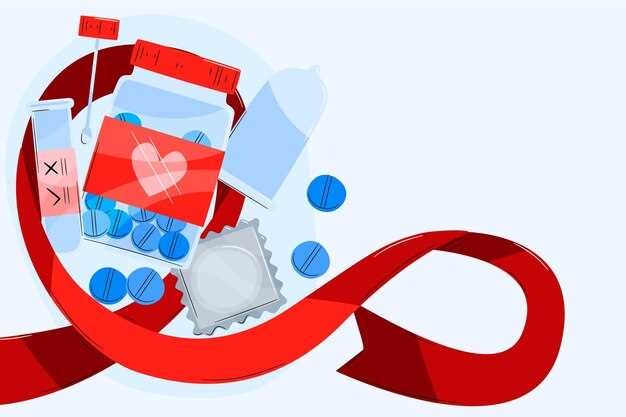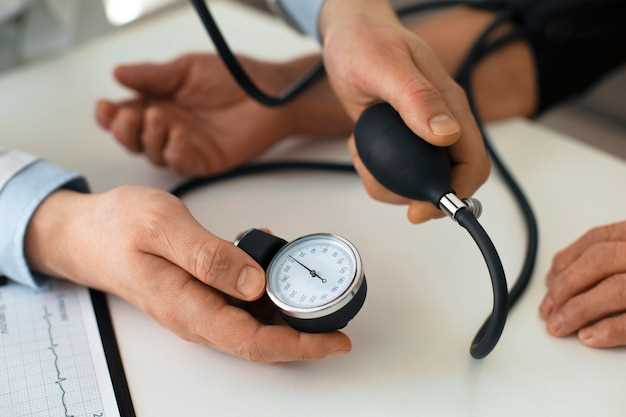
Are you concerned about your blood pressure levels? Atorvastatin is a widely prescribed medication used to treat high cholesterol and lower the risk of heart disease. While this medication is generally safe and effective, you may be wondering whether it can cause low blood pressure.
Low blood pressure, also known as hypotension, is a condition in which your blood pressure drops below normal levels. It can cause dizziness, fainting, and other symptoms that can affect your daily life. Therefore, it’s crucial to understand the potential effects of medications like Atorvastatin on your blood pressure.
So, can Atorvastatin cause low blood pressure? The answer is…
The Relationship Between Atorvastatin and Low Blood Pressure
Atorvastatin is a medication commonly used to treat high cholesterol and reduce the risk of heart disease. While it is primarily known for its cholesterol-lowering effects, there have been some studies and reports suggesting a potential relationship between atorvastatin use and low blood pressure.
Low blood pressure, also known as hypotension, is a condition where the force of blood against the walls of the arteries is lower than normal. This can cause dizziness, lightheadedness, and even fainting in some cases.
Research on the connection between atorvastatin and low blood pressure is still ongoing, and the exact mechanisms behind this potential relationship are not yet fully understood. However, some studies have shown that atorvastatin may have a direct effect on blood pressure regulation.
- One possible explanation is that atorvastatin may cause dilation of the blood vessels, leading to a decrease in blood pressure.
- Another theory is that atorvastatin may indirectly affect blood pressure by improving the function of the endothelium, the inner lining of blood vessels, which plays a crucial role in blood pressure regulation.
It’s important to note that not everyone who takes atorvastatin will experience low blood pressure. The risk may vary depending on factors such as dosage, individual susceptibility, and coexisting medical conditions.
If you are taking atorvastatin and are concerned about the potential link to low blood pressure, it is recommended to speak with your healthcare provider. They can evaluate your specific situation and provide guidance on monitoring your blood pressure while taking atorvastatin.
Overall, while the relationship between atorvastatin and low blood pressure is not fully understood, it is important to be aware of the potential risks and benefits associated with the use of this medication. Regular monitoring of blood pressure and open communication with your healthcare provider can help ensure the safe and effective use of atorvastatin.
Understanding Atorvastatin

Atorvastatin is a medication that belongs to a class of drugs known as statins. It is commonly prescribed to help lower cholesterol levels and reduce the risk of heart disease. Atorvastatin works by inhibiting an enzyme in the liver that is responsible for producing cholesterol.
By reducing the production of cholesterol, atorvastatin helps to decrease the amount of LDL (bad) cholesterol in the bloodstream. This can be beneficial for individuals who have high cholesterol levels and are at risk for cardiovascular problems.
It is important to understand that atorvastatin is not a quick fix. It is meant to be taken on a long-term basis, often for the rest of your life, in order to effectively manage your cholesterol levels. It is also important to note that atorvastatin is not a substitute for a healthy lifestyle, which includes a balanced diet and regular exercise.
When taking atorvastatin, it is important to follow the dosage instructions provided by your healthcare provider. It is typically taken once daily, with or without food, and at the same time each day.
It is also important to be aware of the potential side effects of atorvastatin. Common side effects may include muscle pain, weakness, and liver abnormalities. In rare cases, atorvastatin may cause a serious condition called rhabdomyolysis, which involves the breakdown of muscle tissue and can lead to kidney damage.
If you experience any unusual symptoms or side effects while taking atorvastatin, it is important to contact your healthcare provider immediately. They can help determine if the medication is causing the issue or if there is another underlying cause.
Overall, understanding atorvastatin and its role in managing cholesterol levels is crucial for individuals who have been prescribed this medication. By following the recommended dosage and paying attention to any potential side effects, you can work towards maintaining a healthy heart and reducing your risk of cardiovascular problems.
What is Low Blood Pressure?
Low blood pressure, or hypotension, is a condition in which the force of blood against the walls of the arteries is lower than normal. This can cause inadequate blood flow to vital organs and tissues, leading to symptoms such as dizziness, lightheadedness, fainting, and fatigue.
In some cases, low blood pressure can be a sign of an underlying health problem, such as heart disease, hormonal disorders, or nerve damage. It can also be a side effect of certain medications, including atorvastatin.
The Relationship Between Atorvastatin and Low Blood Pressure
Atorvastatin is a medication commonly used to lower cholesterol levels and reduce the risk of heart disease. While it is generally well-tolerated, some individuals may experience side effects, including low blood pressure.
Research suggests that atorvastatin may affect the body’s production of nitric oxide, a compound that helps regulate blood vessel tone and blood pressure. This can potentially lead to a decrease in blood pressure levels.
Possible Connection Between Atorvastatin and Low Blood Pressure
Although the exact mechanism by which atorvastatin may cause low blood pressure is not fully understood, some studies have reported a link between the use of atorvastatin and a decrease in blood pressure.
It is important to note that not everyone who takes atorvastatin will experience low blood pressure, and the occurrence of this side effect is generally rare. However, if you are taking atorvastatin and experience symptoms of low blood pressure, such as dizziness or fainting, it is important to seek medical attention.
Your healthcare provider can evaluate your symptoms and determine the best course of action, which may include adjusting your medication dosage or considering alternative treatment options.
What is Low Blood Pressure?
Low blood pressure, or hypotension, occurs when the force of blood against the walls of the arteries is too low. It is typically defined as a blood pressure reading lower than 90/60 mmHg, although the exact threshold may vary depending on individual factors.
Low blood pressure can be categorized into two types:
- Orthostatic hypotension: This occurs when blood pressure drops suddenly upon standing up from a sitting or lying position. It can cause dizziness or lightheadedness.
- Postprandial hypotension: This is a drop in blood pressure that occurs after a meal. It is more common in elderly individuals and those with certain medical conditions.
Some common symptoms of low blood pressure include:
- Dizziness or lightheadedness
- Fainting
- Blurry vision
- Nausea
- Fatigue
- Rapid or shallow breathing
There are various potential causes of low blood pressure, including:
- Dilation of blood vessels
- Dehydration
- Medication side effects
- Heart problems
- Hormonal imbalances
- Nutritional deficiencies
When considering the possible connection between atorvastatin and low blood pressure, it is important to consult with a healthcare professional. They can provide personalized guidance based on your specific medical history and current medications.
Note: It is essential to adhere to prescribed medications and follow recommended lifestyle changes, such as a healthy diet and regular exercise, to manage low blood pressure effectively.
Possible Connection Between Atorvastatin and Low Blood Pressure

Atorvastatin, a medication commonly prescribed for lowering cholesterol levels, has been associated with a potential connection to low blood pressure. While atorvastatin is primarily used to reduce cholesterol, it can also affect other areas of the body, including blood pressure regulation.
Low blood pressure, also known as hypotension, is a condition where the force of blood against the artery walls is lower than normal. Symptoms of low blood pressure may include dizziness, fainting, fatigue, and blurred vision.
Some studies have suggested that atorvastatin may contribute to low blood pressure in certain individuals. The exact mechanism behind this connection is not fully understood, but it is believed that atorvastatin might affect the production of certain chemicals in the body that regulate blood pressure.
What to do if you experience low blood pressure while taking atorvastatin?
If you are taking atorvastatin and experiencing symptoms of low blood pressure, it is important to consult with your healthcare provider. They can evaluate your condition and make appropriate recommendations. It may be necessary to adjust your dosage of atorvastatin or consider alternative medications if low blood pressure persists.
In addition to working with your healthcare provider, there are some lifestyle measures you can take to manage low blood pressure while taking atorvastatin. These include:
- Drinking plenty of fluids, especially water
- Avoiding standing up too quickly, as this can cause a sudden drop in blood pressure
- Consuming a balanced diet with adequate salt intake, as low sodium levels can contribute to low blood pressure
- Wearing compression stockings to improve blood flow
- Avoiding excessive alcohol consumption
- Engaging in regular exercise, unless otherwise advised by your healthcare provider
- Monitoring your blood pressure regularly and notifying your healthcare provider of any significant changes
It is important to remember that everyone’s body reacts differently to medications, and while atorvastatin may be associated with low blood pressure in some individuals, it does not mean that everyone will experience this side effect.
| Symptoms of Low Blood Pressure | Measures to Manage Low Blood Pressure |
|---|---|
|
|
If you have any concerns about the potential connection between atorvastatin and low blood pressure, it is best to consult with your healthcare provider for personalized advice and guidance.
Managing Low Blood Pressure While Taking Atorvastatin
If you are taking Atorvastatin and experiencing low blood pressure, there are several steps you can take to manage it:
1. Consult with your healthcare provider: It is important to discuss any concerns or symptoms of low blood pressure with your healthcare provider. They can evaluate your condition and provide appropriate guidance.
2. Monitor your blood pressure regularly: Keeping track of your blood pressure readings can help you and your healthcare provider determine the effectiveness of your treatment and make necessary adjustments.
3. Stay hydrated: Drinking enough water throughout the day is crucial for maintaining proper blood pressure levels. Dehydration can contribute to low blood pressure, so make sure to stay adequately hydrated.
4. Avoid sudden changes in posture: When getting up from a sitting or lying position, do it slowly to allow your body to adjust and prevent a sudden drop in blood pressure.
5. Increase salt intake: In some cases, increasing your salt intake may help raise your blood pressure. However, it is important to consult with your healthcare provider before making any dietary changes.
6. Eat smaller, more frequent meals: Consuming smaller, more frequent meals throughout the day can help regulate blood pressure and avoid drastic drops in pressure after large meals.
7. Wear compression stockings: Compression stockings can help improve circulation and prevent blood from pooling in the lower extremities, thereby aiding in maintaining normal blood pressure levels.
8. Avoid hot showers or baths: Hot water can cause blood vessels to dilate, which can result in a drop in blood pressure. Opt for lukewarm showers or baths instead.
9. Be cautious with alcohol consumption: Alcohol can lower blood pressure, so it is important to consume it in moderation or avoid it altogether if you are experiencing low blood pressure.
10. Get regular exercise: Engaging in regular physical activity can help improve cardiovascular health and regulate blood pressure. However, consult with your healthcare provider before starting any new exercise routine.
Remember, it is essential to consult with your healthcare provider before making any changes to your treatment or lifestyle. They will be able to provide personalized advice based on your specific condition and medical history.
